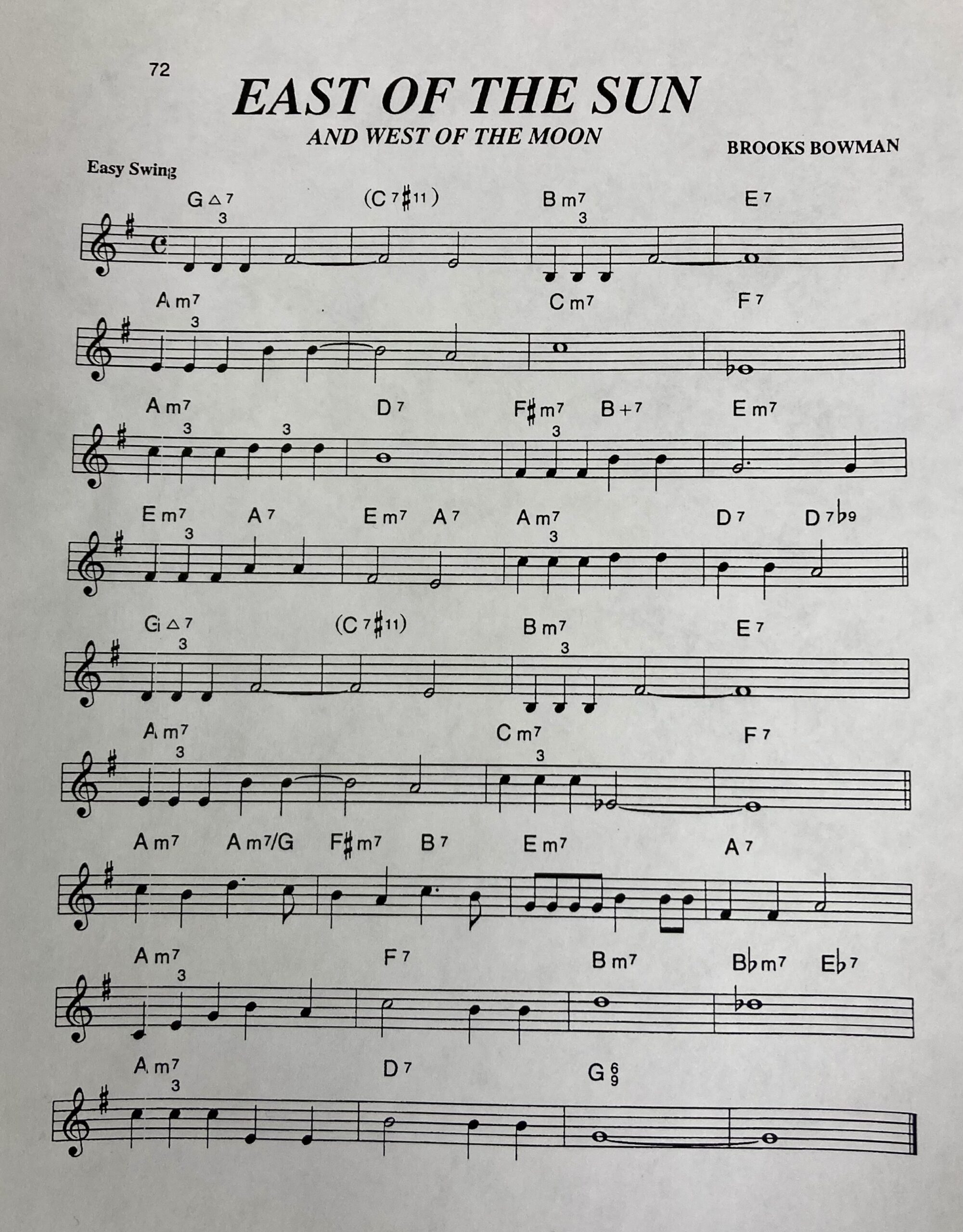Harmonic Rhythm:
How often will the chords change? Every…
- 8 measures, 4 measures, two measures, 1 measure, 2 beats?
- consider balance and symmetry
More Chords or Less Chords?
Do you want to add complexity or create a more open, modal environment?
“Giant Steps” vs. “Milestones”
Common Modal Settings in Modern Jazz
Used in vamps, intros, release sections, etc.
- sus chords (F7sus = Cmi7/F)
- Lydian: Gmaj7(#11)
- Phrygian: Dmi7(b5)/G = G Phrygian = Eb major parent scale
- really, any mode/scale (symmetrical or asymmetrical)
Voicing Shapes
AKA: Rootless LH voicings
F13 = Cmi6 = Ami7(b5) = Ebmaj7(#11) = B7alt (#9, b13)
Superimposing Progressions (on top of progressions)
- Two-beat Dominant Cycles: C7, F7, Bb7, Eb7, Ab7, Db7, Gb7, B7, E7, A7, D7, G7
– work backwards from the destination (such as the IV chord in measure 5)
– Examples: Jordu, Funk in Deep Freeze, Turnpike - John Coltrane’s Giant Steps Matrix
- Coltrane Changes
- 26-2 (based on “Confirmation”)
- But Not For Me
- Satellite (based on “How High the Moon”)
Symmetrical Scale Harmony
- Whole Tone
- Diminished
East of the Sun:

